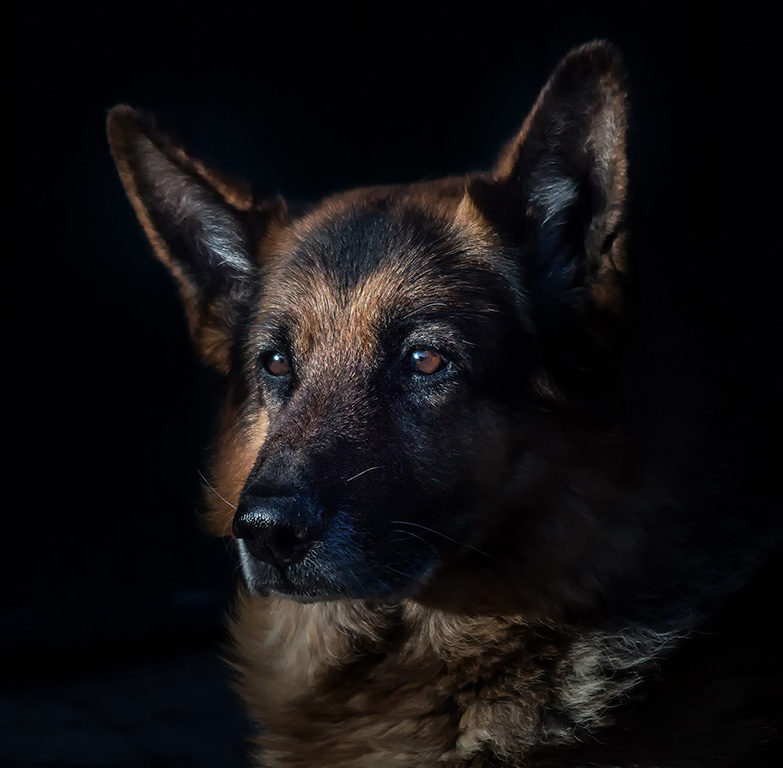An After Death Experience

What appeared in front of the truck was like being at a drive-in movie and watching a show on the large screen. There was my son, Chris, kneeling down in a beautiful meadow. Almost immediately, out of the periphery, came Agatha bounding (before, she was unable to use her hind legs) toward Chris. Her ears were flopping up and down as she ran and jumped into Chris’ arms and licked his face.
Seizures In Older Dogs

Seizures in older animals are relatively common and can exhibit in different forms depending on the underlying cause and/or location of the lesion within the brain. However, there are also causes of seizures related to abnormalities not associated directly with the brain. There can be toxins within the body (a liver shunt, kidney disease), or ingested toxins (snail bait, medications, alcohol and many others). A low blood sugar (glucose) can also result in seizures.
My Pet Won’t Eat . . . Why?

Many, if not most of the calls I receive in regard to euthanasia, are because the animal in question is not eating. These are usually older pets and a significant number have been diagnosed with a terminal disease. The general viewpoint espoused is that when a pet stops eating they are “ready” to die. I believe it’s important to understand that animals are never “ready” to die. They are self preservative creatures. They are instinctive about death and they are very good at dying, just like they are very good at living.
How Our Pets Die

Death, or “to die,” is the end for every living being, and we should all understand that life is a finite miracle that will come to a conclusion at some point, no matter what is done to prevent it.
How Pet Euthanasia Is Justified

In my many years as a veterinarian and especially now that I work exclusively with elderly pets, there are three phrases, and one, two or all three of them enter into nearly every conversation I have involving end of life. I finally realized that pet caretakers, as well as veterinarians, use these phrases to give themselves permission to end an animal’s life.
Gabapentin – Cautions & Uses

Gabapentin has analgesic effects and also anticonvulsant activity. The mechanism for its actions is not well understood. It can be a useful medication for the elderly dog or cat, but can also create problems if not used and dosed correctly.
Bone Cancer In Dogs

Osteosarcoma is cancer of the bone. It is seen more commonly in large or giant breed dogs and occasionally in cats. It is so common in Irish Wolfhounds that any lameness should be investigated as soon as possible. It can affect any bone in the body, but usually is seen in the long bones of either the front or rear limbs.
How Our Pets Age

In general terms, the geriatric period for dogs starts around 7 to 9 years of age, and for cats at around 10 years, but these parameters vary depending on species and size. The time frames listed here are certainly not exact and are only used as reference points for discussion.
Cardiac Disease In Older Pets

Check-ups are important as the dog or cat ages and signs of heart disease can often be diagnosed or suggested when the veterinarian listens to the heart via a stethoscope. If a murmur or heart beat arrhythmia is auscultated (heard), the doctor may recommend a visit to a veterinary cardiologist for a more detailed and complete diagnosis to see if treatment is necessary.
Do You Have To Choose Euthanasia?

It’s also a truism that the general consensus on the internet is that it’s “not humane” to allow a pet to die naturally, and that you must choose euthanasia. This is frustrating to me because it’s based on incorrect information. Dying is a process of ending life and that is true for all living beings.
Abdominal Masses In Dogs

Since I just deal with geriatric, elderly and terminal pets, I see masses (tumors, growths) within the abdomen fairly frequently. Certain breeds are represented more often: Labradors, Golden Retrievers, German Shepherds and Pit Bulls are among the most commonly affected.
Books On Pet Loss

List compiled by Belinda McLeod for Cake Blog
Some of these books offer suggestions on how to grieve the loss of a pet. Others are stories that celebrate animals. Choose the book carefully, especially if you are using it as a gift. You don’t want to open old wounds in your attempt to offer solace.
Even if you are purchasing a book for adults, it is encouraged that you check out the second part of the list. Children’s books can be more accessible, and easier to manage, in a difficult period.
Pet Suffering And Euthanasia

I receive many phone calls in regard to pet “suffering” and “quality of life” issues. In my opinion, these specific terms are related to our “human” viewpoint and not the pet’s.
Tramadol Warning

This is a synthetic opiate that is often prescribed for analgesia (pain control) in the dog. The FDA has classified this drug as a “controlled” substance. In my experience, this medication creates more problems than it helps.
Vestibular Disease In Dogs and Cats

Vestibular disease is related to a problem in the middle ear whereby the normal orientation of the body related to earth is not normal. It causes dizziness and is similar to motion sickness. In dogs, it is called Old Dog Vestibular Disease and in cats, it is called Feline Idiopathic Vestibular Disease.
Kidney Insufficiency

It is important to know that once the cat or dog develops symptoms of kidney disease, or kidney insufficiency is found by way of blood tests, a significant amount of the kidney tissue has been depleted and cannot be regenerated.
Dementia In Dogs & Cats

This, like neuropathy, is common in the aging pet and is seen in both cats and dogs. It is almost a mirror image of what is seen in people and the signs can be similar.
Geriatric Neuropathy In The Dog

One of the most common reasons people call me is because their dog is having difficulty getting up or lying down. The perception is that it’s “horrible” arthritis or “hip dysplasia.”
